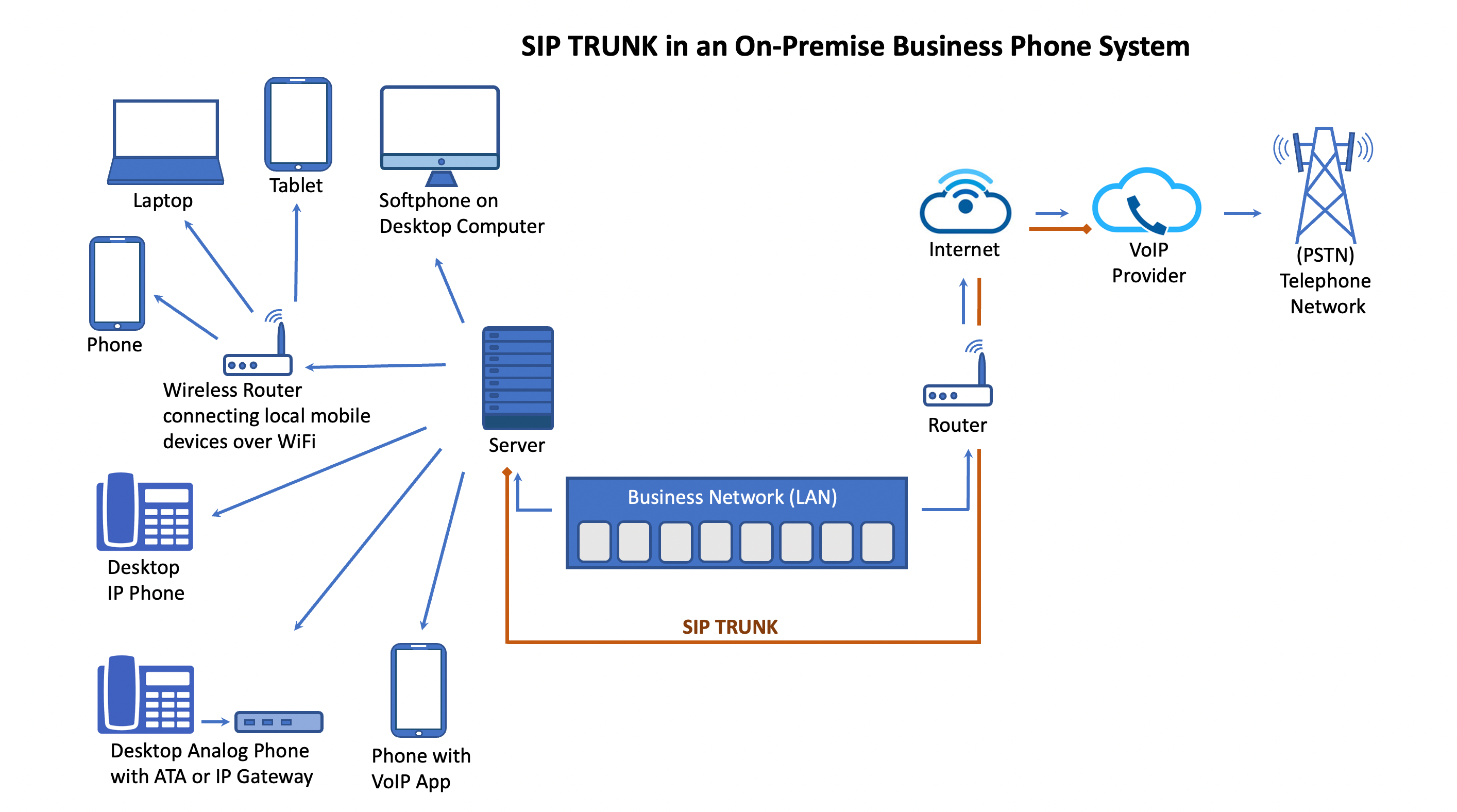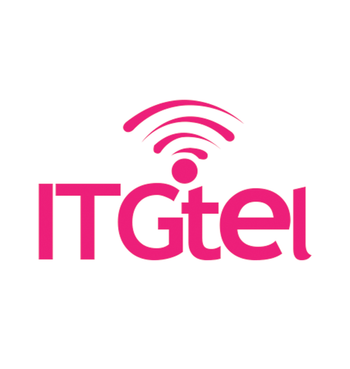
You want to connect your company’s phone system to the cloud and enjoy the benefits of VoIP. One of the first questions that comes up: should I go with hosted PBX or SIP trunking?
First things first, here’s the essential difference between the two:
Cloud PBX is a cloud-based phone system solution entirely handled by a third-party service provider. SIP trunking connects your existing on-premise PBX equipment to the internet.
When you know you’ll be making calls over the internet instead of the traditional copper wires, you need a setup that will serve your company’s needs now, as well as in the future as you potentially grow.
To make your decision, it’s important to look at VoIP from all angles: finances, logistics, business expansion, and implementation. In this guide, we’re taking you through them all and helping you make the most informed decision.
You can jump straight into each difference between hosted PBX and SIP trunking right here:
- Initial cost of setup
- Ongoing costs
- Maintenance and technical expertise
- Your company size and expansion
- Geographical flexibility
- Call quality
- Security
What is a Cloud PBX Service?
A cloud PBX service is a telephone system that’s managed completely off-site by a third-party service provider. It connects directly to the public switched telephone network (PSTN).
In other words, a company that implements a hosted PBX solution doesn’t have to own or maintain any infrastructure, equipment, or software just to have a reliable voice communication solution.
You may also come across virtual PBX, hosted PBX, cloud phone system, or hosted VoIP as other names for Cloud PBX.
Benefits
Cloud PBX is deployed quickly and easily, often within a day. Because it’s provided by an Internet Telephony Service Provider (ITSP), all you need for cloud PBX to start using VoIP communications are:
- IP connectivity
- Internet connection
With cloud PBX, there’s no need for on-premises PBX (Private Branch Exchange) equipment / Telephone system. You’ll never have to worry about maintenance costs, PBX software upgrades, or service downtime.
Cloud PBX offers many benefits that extend to standard VoIP (Voice Over Internet Protocol) services, such as:
- Managing and routing incoming calls
- Handling transfers and holds
- Call recording
- Conference calling
- Automated messages
- Voicemail
There’s no high setup cost of new hardware, equipment upgrade, or replacement. This offers cost savings and efficiency. Cloud PBX allows small businesses to receive PBX service easily.

What is SIP Trunking?
SIP trunking is a VoIP service that connects your existing PBX to the internet. It enables you to use your company’s on-premise hardware PBX. It’s already installed and managed on-site by your own IT staff. A SIP trunk is a direct virtual connection between the two infrastructures: your PBX equipment and VoIP.
SIP trunking replaces traditional landlines and offer huge versatility. They don’t just carry voice, but also video, emails, and other data, all on the same line. This eliminates the need for additional lines you’d otherwise need to access the internet or send faxes.
Unlike cloud PBX, where a third-party provider handles all required equipment and software on their premises, SIP trunking requires one of two things:
- An IP-enabled PBX on-site, or
- A VoIP gateway to connect your traditional PBX to the cloud .This will depend on your current business phone system.
Benefits
Without SIP (Session Initiation Protocol) in place, your business communications will rely on separate structures of voice and data communication. This old system can’t handle large volumes of calls. You might be unreachable to your customers in crucial moments.
As a result, you might see a company's continuity break down.
With SIP trunking, communication becomes reliable and speedy. This includes:
- Immediate call routing and recording
- Multimedia messaging
- Video conferencing
- Instant data exchange
In other words, if you already have PBX equipment in place, switching to SIP trunking is not only easy, but recommended. You’ll enjoy more features and a better telephone service compared to traditional phone lines.

Hosted PBX vs SIP trunking: 7 Differences
Hosted PBX | SIP Trunking | |
1) Initial cost of setup | Low if you have no PBX equipment on-premise | Low if you already own PBX equipment on-premise |
2) Ongoing costs | RM15-RM50 per phone line per month | RM20-RM50 per user per month |
3) Maintenance and technical expertise | Handled by your provider | Handled by your IT staff (internal expertise required) |
4) Your company size and expansion | Recommended for 1-500 employees, ease of expansion | Recommended for 5-500 employees, expansion to remote locations |
5) Geographical flexibility | Flexible and self-reliant | Often dependent on licensing and support of the PBX platform |
6) Call quality | Great for small- high number of concurrent calls | Great for sizeable workforce and a high volume of calls |
7) Security | Depends on the provider’s security standards | Superior, more secure infrastructure |
Let’s look at each of the main differentiators between these two options.

How Do You Know What’s Right for You?
Now that we’ve walked you through all the differences between cloud PBX and SIP trunking, it’s time to make a decision.
Both services come with many features and benefits that often overlap. Both are the foundation of a modern and reliable VoIP network.
Here’s a rundown of key questions to answer so you can find the best option for you:
- What is the current size of your business and will that change? Do you plan to expand?
- Do you have PBX equipment in place already?
- What level of flexibility with your phone system are you looking for?
SIP trunking is the more commonly selected option. It offers increased security, long-term cost efficiency, flexibility, and quality of service. This particularly applies to medium to large enterprises.
Investigate both options — it pays off to take that time. You’ll be sure you’re making well-informed decisions from a technical, financial, and logistics perspective. You should look at cost efficiency on a long-term scale, especially when looking at setup costs.
With our SIP trunking platform, you can make the most of your business communications and get crystal-clear audio. You’ll also reduce your current bill and stop paying for each minute you call.
All that with no disruption to your service. Imagine an efficient and empowered customer support team on one side and happy customers on the other.
This is exactly what a feature-rich IP-based system will bring you. Sounds like what you’re looking for? Get in touch so that your communications setup can scale with you.
